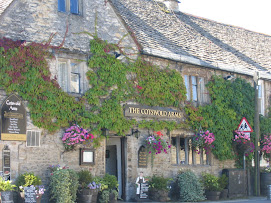Take the E6 Highway out of Oslo, drive north for some 2,000 kilometres and you will eventually reach Nordkapp, Europe’s northernmost point. This long stretch of road is both a filming dream and nightmare. There is so much spectacular scenery you don’t know where to point and shoot next. Melanie Surplice reports on her recent visit to Norway – land of the fjords and one of nature’s most beautiful playgrounds.
 A large ceramic troll outside the small tourist-filled town of Dombas reminds visitors that they are deep in the heart of Norway. From here, for the next several thousand kilometres we see trolls of all shapes and sizes, and ‘Moose Crossing’ signs as frequently as ‘Stop’ signs.
A large ceramic troll outside the small tourist-filled town of Dombas reminds visitors that they are deep in the heart of Norway. From here, for the next several thousand kilometres we see trolls of all shapes and sizes, and ‘Moose Crossing’ signs as frequently as ‘Stop’ signs.As rain begins to fall, we turn off Norway’s main E6 Highway onto the E136, en route to our campsite at Andalsnes. What begin as nondescript rocks in the distance suddenly loom into towering snow-capped mountains, as we descend deep into a valley.
The sky is perilously black and the rock faces impossibly sheer, almost vertical. It's difficult to take in the enormity of the mountains from the coach windows. Thirty faces and cameras are pushed hard up against the glass, bottom jaws dragging, and necks straining to see the cliff tops. Waterfalls spew from openings in the cliffs with the ferocity of Niagara Falls.
Birth of the fjords
It is difficult to imagine that 65 million years ago this landscape consisted of rounded hills and wide valleys. The land rose during the Tertiary period, and the ensuing formation of steep mountainsides gave new force to the rivers. The landscape was gradually worn down to form deep, steep-walled river valleys.
During the 40 or so ice ages to hit Northern Europe in the last 2-3 million years (the Quaternary era), the ice flowed down the mountainsides and valleys in a slow-moving mass, collecting rock piles in its path and digging the valleys deeper and wider.
The once flat landscape was slowly transformed into a land with steep-walled troughs leading to the sea. The enormous weight of the glacial ice masses pressed down the land and carried glacial debris towards the sea, which is why most fjords are so-called threshold or bar fjords – that is, very shallow at the mouth and up to 1000 metres deep in their inner reaches.
As we near Andalsnes, we see Trollveggen, the highest vertical mountain wall in Europe. From top to bottom, Trollveggen stands a staggering 5,950ft, of which 3,300 is completely vertical and another150ft is overhang.
Also known as The Troll Wall, Trollveggen was first climbed in 1958 by a local Norwegian climber. Norwegian climbers consider the area the ultimate challenge. Not surprisingly, it has been the setting for films such as Cliff Hanger.
The cloud and snow mean we can't see the top of this mountainous giant, although our oohs and ahhs continue all the way to the campsite.
Located at the edge of the Romsdalsfjord, Andalsnes is the northern gateway to Norway’s western fjords.
With some free time, we take advantage of the free canoes by the lake. Others hot-foot it to the campsite’s Internet cafe. At the equivalent of US$5 for 15 minutes, talk is definitely not cheap in Norway. Nothing is, for that matter. Mini DV tapes are more expensive the further north we go – the most expensive tapes hit US$25. A basic hamburger lunch at McDonalds cost one of my travel buddies US$15!
We have been promised that the next day will be one of the highlights of the trip, and we are not disappointed.
Trollstigen Road – gateway to fjord country
The day begins with a hair-raising drive up the Trollstigen Road (Troll’s Path). The road is so technically challenging that a specialist driver is brought in for this part of the journey.
Trollstigen was opened in 1936, and has since been an important link between the towns of Romsdalen and Sunnmore. With a total of 11 hair-pin bends, a 1:12 gradient, and the fact that it is almost one lane all the way, Trollstigen is mind-boggling.
 Halfway up to the mountain pass, we stop for a photograph in front of the thundering 180-metre Stigfossen waterfall. It is so loud I can barely hear myself think.
Halfway up to the mountain pass, we stop for a photograph in front of the thundering 180-metre Stigfossen waterfall. It is so loud I can barely hear myself think.The next couple of hours provide breathtaking scenery. I film out of the window for kilometre after bendy kilometre.
Finally we descend into another valley to the picturesque town of Valldal. A 20-minute ferry ride takes us to Eisdal, and from there we continue along the Eagles Road to the top of Norway’s famous 16 kilometre Geirangerfjord.
Even on a cloudy day, Geirangerfjord is as stunning as it is enormous. Three cruise ships moored on the waterfront at Geiranger village are absolutely dwarfed by the fjord.
It had been raining on and off all day so the waterfalls in the area are particularly impressive. It is easy to see why the Seven Sisters, Suitor and Bridal Veil waterfalls are so famous. They are stunning.
It didn’t take the Norwegians long to discover the advantages of living in fjord country. There is fertile soil in the sheltered coves and the sea abounds with fish, seals and whales. The settlers knew it would be hard work to turn the countryside into pasture-land and cultivate crops and, indeed, it was a lifelong struggle against the forces of nature.
Those who chose to settle far up the mountainsides often had to tie their children to a rope to stop then falling. They built rope and pulley systems and ladders to ease the ascent, and kept animals to ensure they were as self-sufficient as possible.
Some of these mountain farms are still occupied in the summer. Along the Geirangerfjord, the local residents' associations have put a great deal of effort into preserving the best farms, which have become a popular destination for walkers. This has breathed new life into an old tradition while providing relaxation and recreation.
 Our mini-cruise comes to an end, and we begin the long and windy drive back to Andalsnes. Norway’s scenery once again takes on an ominous appearance as the clouds roll in.
Our mini-cruise comes to an end, and we begin the long and windy drive back to Andalsnes. Norway’s scenery once again takes on an ominous appearance as the clouds roll in.Fun and games
Mushy patches of snow line the roadside, and we decide it’s time for a late-afternoon snow fight. Passing cars toot as they see 31 crazy tourists running round with snowballs, as if playing with snow for the first time. We eventually return to the coach, cold, breathless and giggling like teenagers.
Just when we think our day can’t get anymore unforgettable, comes the descent of the Trollstigen Road. It was scary enough going up – but going down, in the now torrential rain, with other tour buses trying to pass us in the other direction – is a new experience in anxiety.
To the uninitiated, the road is simply not wide enough in some places for two coaches to pass each other. The drivers, who have obviously done this hundreds of times, know better.
It is my misfortune to be on the cliff side, as another coach passes us on the inside. We are so close to the waist-height safety barrier that I feel our coach is going to topple over – one look down at the spiralling road below sends my heart racing. The hairs on the back of my neck are on end.
Picture two coaches, a hair’s width apart on a tiny slip of road, several thousand metres above sea level, shuffling forwards, centimetre by centimetre – with finally enough space between the mirrors to ensure a safe passing. It’s that close. I mentally run through my travel insurance policy a thousand times and only begin to breathe normally once we’ve made it all the way down.
As we pull into the campsite the sun finally shines through the clouds that have plagued us for most of the day. We are rewarded with a quick glimpse of the snowy peaks of the Romsdalsfjord. It’s one awesome view!
Our journey the next day takes us to the university town of Trondheim, before we again inch our way north via a town called Hell, and into the Arctic Circle – land of reindeers, Santa Clause and the elusive midnight sun.













No comments:
Post a Comment